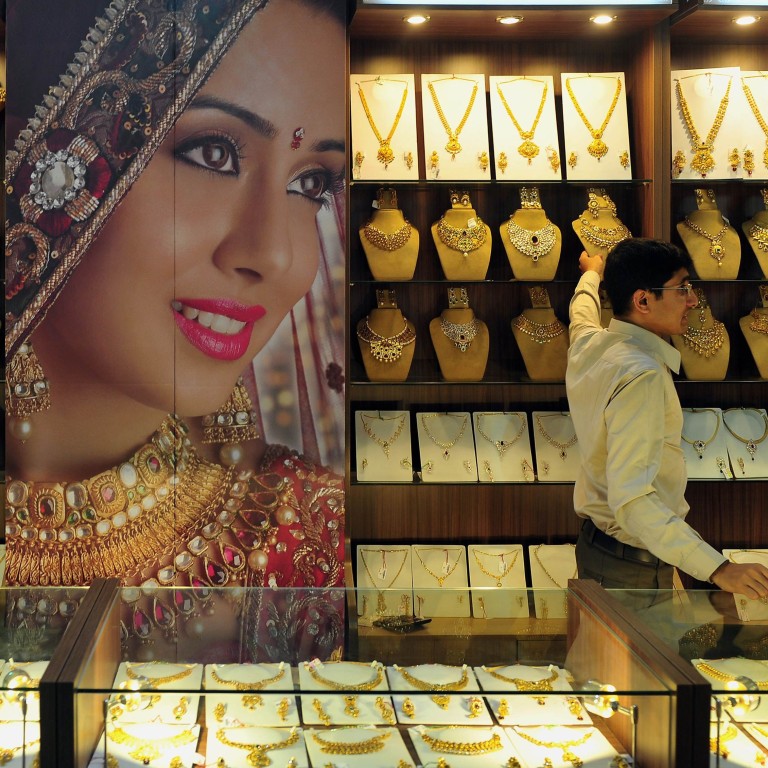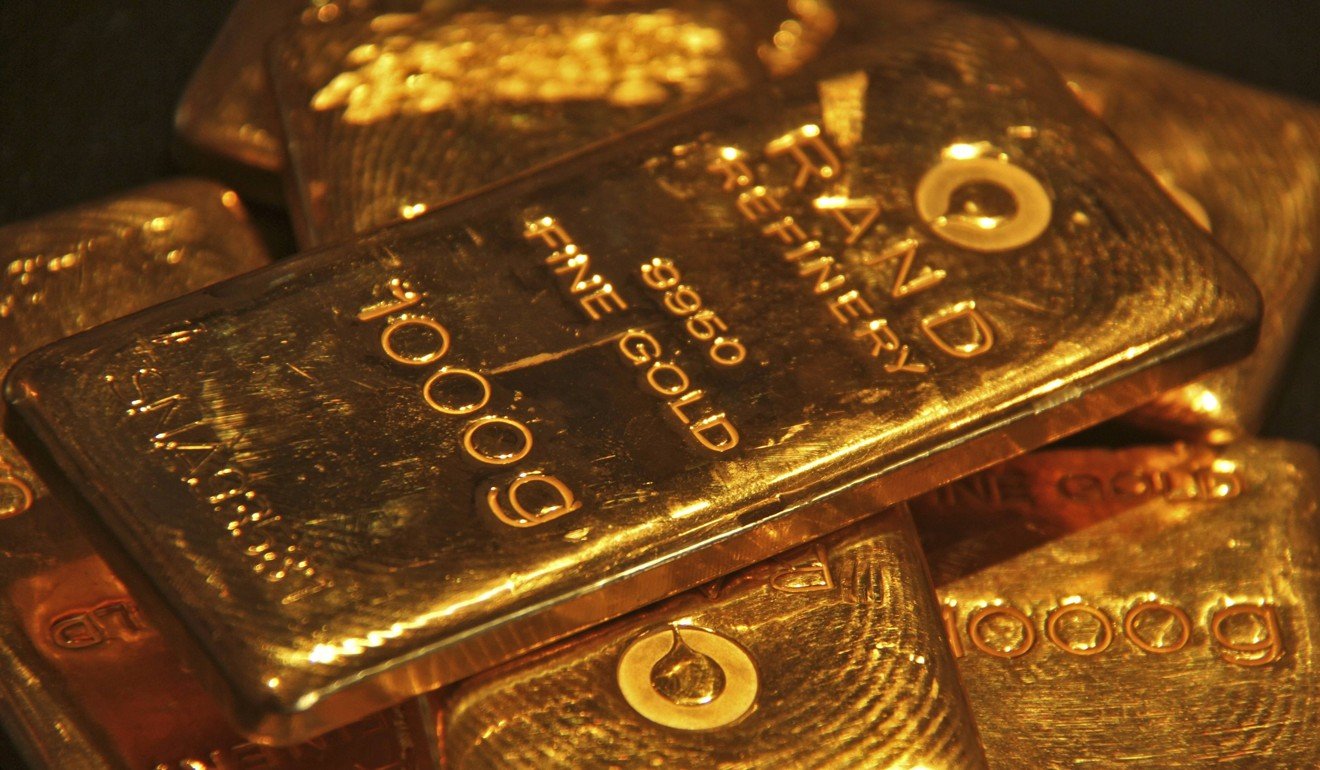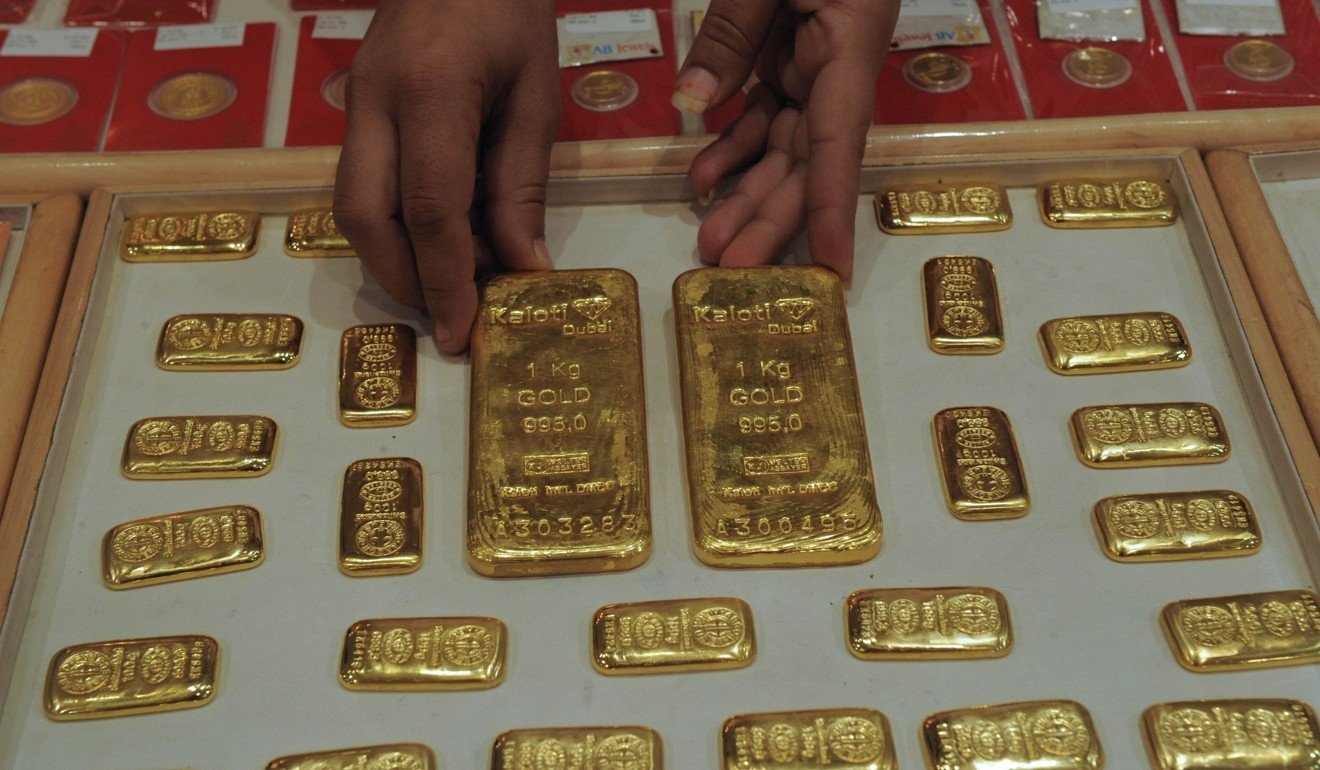
India is crazy about gold. But can the love last as prices skyrocket?
- There has been a downturn in demand in the world’s No 2 market for gold amid a slowing economy and a cost spike of almost 25 per cent this year
- The yellow metal is a fixture at weddings and festive occasions, and has long been a safe and profitable investment option for millions of rural Indians
With their daughter’s wedding set for next February, Janaki and Venkataraman Iyengar needed gifts and silk saris for the big day. Their search took them to Kanchipuram, where they had big plans to buy the finest hand-woven silk clothes and as many shiny ornaments as their money would buy. Only when they arrived did they realise there was a problem: the price of gold had rocketed.
This was something of a sucker punch for the Iyengars, a middle-income couple who had saved for years for this moment. They had planned to gift their daughter 20 pavan of gold (160 grams), in various ornaments, and had managed to set aside 550,000 rupees (US$7,680) from their life savings to cover the cost. This alone was a big ask of Venkataraman, who works at a vehicle service station and makes 30,000 rupees (US$420) a month. But with the new prices the couple were quoted in Kanchipuram, they would have had to shell out an additional 200,000 rupees (US$2,800) – a prohibitive expense, given that the gold price is just one of the many wedding-related expenses they face.
In India’s cloud kitchens, dreams of a healthy-eating unicorn
The steep rise in prices is hurting demand in India, the world’s No 2 market for gold, behind China.
In most parts of the country, it is traditional for the bride’s parents to pay for most of the wedding expenses. Gold ornaments, which hold a heavy cultural significance, form an appreciable portion of this expenditure. Now, the Iyengars are unsure as to whether they should limit their outlay to expensive saris, or take a loan to procure gold and jewels.
“We can’t do much about it. Essentially, our family’s reputation and daughter’s relationship with her in-laws depend on it,” Venkataraman said.
“I didn’t expect gold prices to abruptly soar like this. There’s usually some fluctuation but this is a sharp spike,” he said.

ALL THAT GLITTERS
The yellow metal touches every aspect of life in India, from a child’s first birthday to weddings and festive occasions. Farmers invest in gold jewellery when there is a good harvest.
Nearly two-thirds of India’s gold demand comes from rural areas. However, early this month, the price of 10 grams of 24-carat gold hit a record high of 39,885 rupees in India’s domestic bullion market though, in recent days, the price has eased somewhat. Still, with the price wobbling in the 32,000-rupee range in May, the jump of over 20 per cent within a few months has had a noticeable effect on consumer demand, which has since gone into free fall.
“Temporarily, gold is losing its charm, and consumers are [putting their buying] on hold and waiting for a reduction or stability in its price,” said Rajendra Jain, managing director of a leading jewellery brand in India.
According to the Gem and Jewellery Export Promotion Council, sales of gold and diamond jewellery had previously been projected to grow 7 per cent annually over the next three to five years, but the recent downturn has called this into question.
Subdued demand is another worrying sign for the gold-crazed country as its economy stutters.
Abandoned in Assam: India creates its own Rohingya, and calls them ‘Bangladeshi’
Prior to the slowdown, the first quarter of the year had seen a 9 per cent growth in gold sales and the second quarter, a healthy 13 per cent rise, due to the springtime Akshaya Tritiya prosperity festival and seasonal sales.
The picture is likely to be far less rosy when results from the third quarter are released, as even without the rising prices, this period tends to be the weakest for gold as it is neither wedding nor harvest season.
At the beginning of the third quarter, in July, sales took a blow when the government hiked the import duty on gold and precious metals from 10 per cent to 12.5 per cent. The move was announced in the federal budget as an attempt to recapitalise banks and bring down the fiscal deficit. Gold imports reportedly plunged 73 per cent year on year – from 111.47 tonnes in August 2018 to 30 tonnes last month.
The only solution that can bring the industry back and can save the gold jewellery business is if the import duty on gold can be waived
A similar fluctuation occurred in 2013 when the price of gold leapt 2,500 rupees in a single day – owing to unprecedented currency fluctuations and a high import tax – triggering a sharp surge in the smuggling of gold into India.

“The only solution that can bring the industry back and can save the gold jewellery business is if the import duty on gold can be waived. Making gold available at a price 12.5 per cent cheaper can bring the glitter back to gold in India,” Jain said.
SAFE-HAVEN ASSET
Much of the industry’s retail business in India happens at smaller merchants. Two of these retailers said their businesses had taken a hit of between 30 and 40 per cent due to the price spike, as their regular customers preferred to wait.
A senior member with the Tata conglomerate, which steers the high-profile jewellery brand Tanishq, said general consumer sentiment was worryingly low, similar to other sectors such as automobiles, apparel and fast-moving consumer goods.
India’s gold industry has also been shaken by global factors, including firmer prices overseas and the rupee’s weakening against the dollar – which makes imports of dollar-denominated gold costlier. “Major factors which have pushed the gold price higher in the last few months have been the slowdown in major economies, sharp [exchange-traded fund] inflows, monetary easing by major central banks and increased US-China trade tensions,” said Ravindra Rao, vice-president and chief of commodity research at the broking firm Kotak Securities. The central banks of several nations, including China and Russia, have been beefing up gold holdings to diversify their foreign-exchange reserves, a spree that has pushed the global price of gold to around US$1,500 a troy ounce (31.1 grams) – the highest since 2013.
Deft diplomacy and economic realism help India sell its Kashmir and Assam policies
The sharp rise in gold prices signifies a shift in the market, from risky assets to safe-haven assets
“The sharp rise in gold prices signifies a shift in the market, from risky assets to safe-haven assets. While we may see bouts of corrections and rallies, gold is likely to outperform unless the global economic outlook improves significantly,” Rao said.
He added that the final quarter starting in October – which includes the festive season of Diwali and Dhanteras, when gold purchases are conventionally high – would be tough this year, given the concerns over farm revenues and slowing global growth.

As domestic demand struggles, Indian jewellers are exploring an opportunity to boost their exports of jewellery to the United States – which currently stand at US$10 billion annually – as the Trump administration last month hiked the tariff on gems and jewellery from China by 10 per cent to 20.5 per cent. The American tariff on imported jewellery from India is 5.5 per cent.
POT OF GOLD
Indian households are estimated to have so far accumulated 25,000 tonnes of gold – about 40 per cent of the country’s GDP in terms of value – according to figures from the World Gold Council (WGC). This makes Indians the largest hoarders of the precious metal.
Indian families’ hunger for physical gold is reinforced by the fact that government schemes such as gold monetisation – in which individuals can park their jewellery in banks for interest – and sovereign gold bonds or digital gold have failed to attract investors.
In Kashmir, the Indian government is always watching
“Gold imports have dropped. Our anecdotal evidence suggests the recycling of gold has gone up significantly this [July to September] quarter, and we’re still waiting to collate an aggregate figure,” said Somasundaram PR, managing director of the WGC’s India arm.
“It is understandable because of the high prices at which people will sell gold, particularly ahead of the harvest season. So we will see the highest phase of recycling of gold this year.”
He said that while people in India bought gold because they would like to see its price go up, they would prefer it to increase as a long-term trend instead of a sharp rise.
From this perspective, Somasundaram expected demand to increase once prices stabilised. “Affordability will definitely be a problem in the short term. But the acceptability of the price rise will be there among the people who understand it is a trend.” ■

